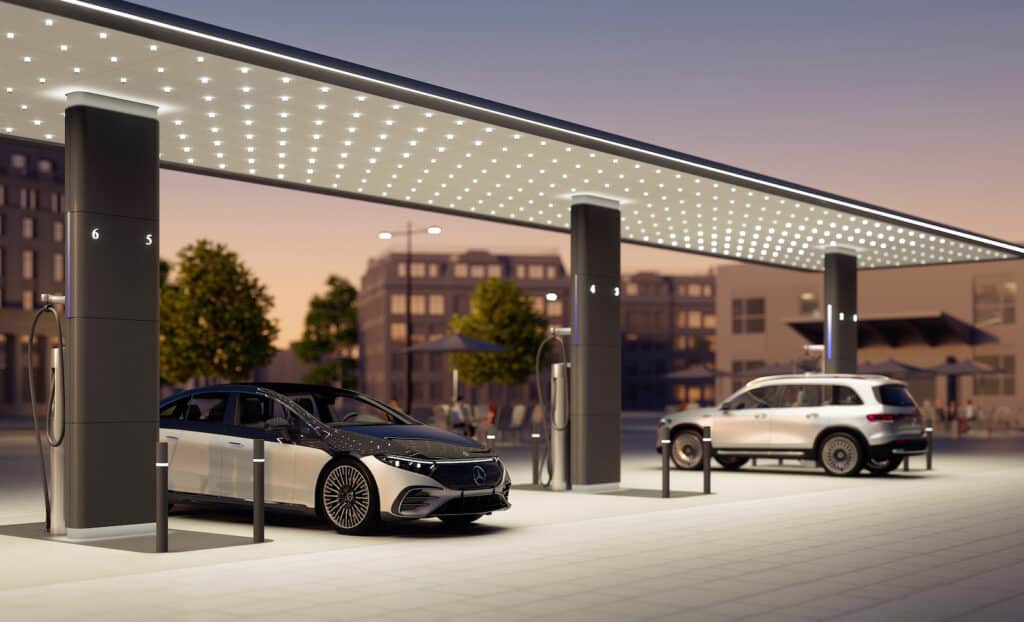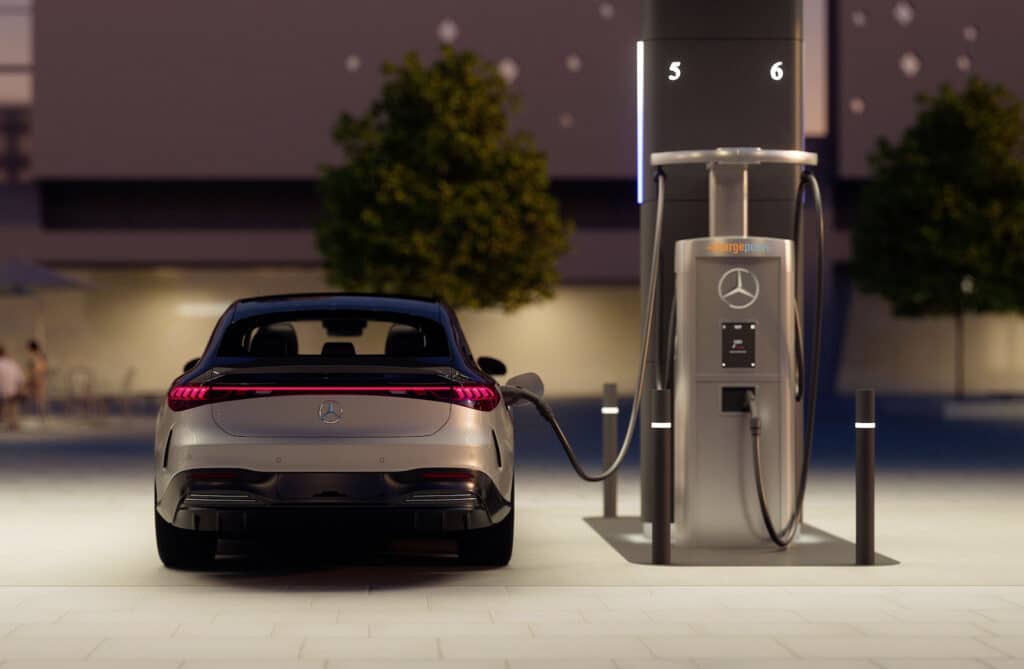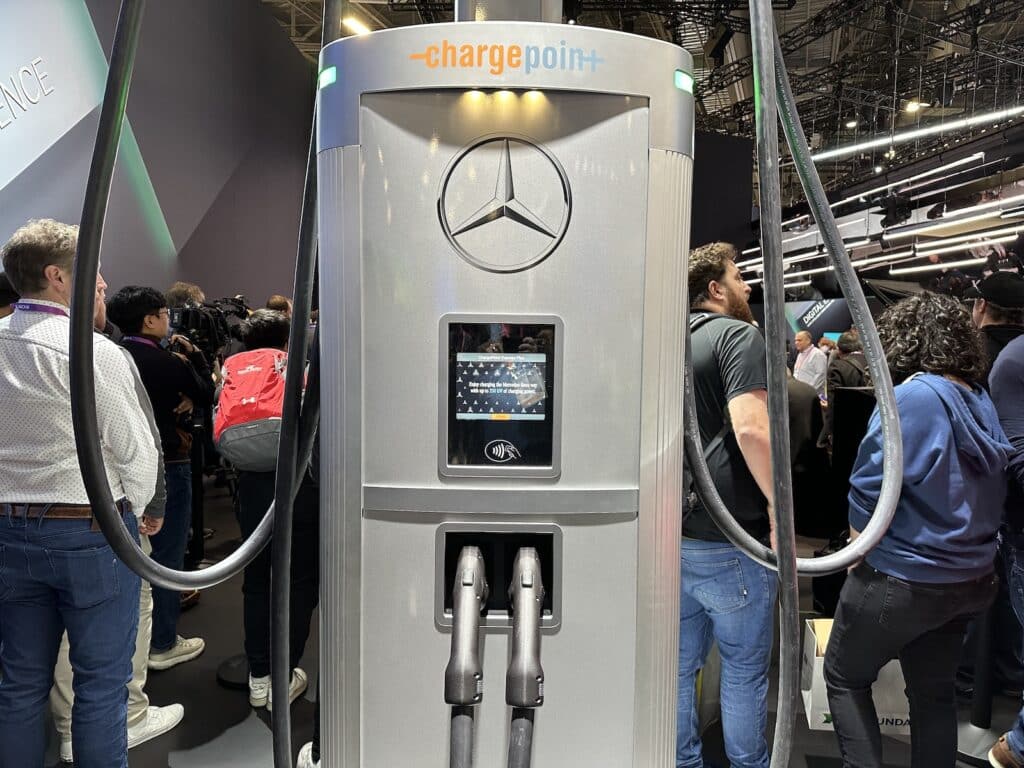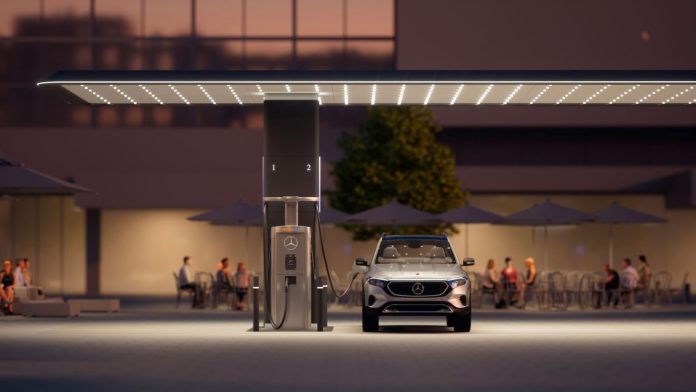Mercedes-Benz will launch a branded global network of EV chargers, with the first set to start rolling out across the U.S. and Canada this year.
Eventually, the network is expected to consist of 10,000 chargers and will be available to EV owners in North America, Europe and China, the world’s three largest markets for battery-electric vehicles. The luxury brand is following a model established by Tesla, which has helped prop up demand for its EVs by setting up its readily accessible Supercharger network. But Mercedes said its stations will be open to all vehicles using “compatible” charging equipment.
Consumer surveys show that “range anxiety” is becoming less of a concern for potential EV buyers as new models pack in more powerful batteries. Finding public charging is becoming the bigger concern for many owners and potential buyers.
Acclerating the EV “transformation”
“To accelerate the electric transformation, we need to ensure that the charging experience keeps pace, as well,” said Mercedes Chairman Ola Källenius. “We won’t take a wait-and-see approach for (a public network) to be built. That’s why we are launching a global high-end charging network.”

Currently, about 80% of EV charging is done at home or office, an advantage for owners since it lowers their energy costs and means they can begin or end the day with a full battery. But there is clearly a need for a public charging system to serve as an alternative to today’s vast gasoline service station network.
For one thing, owners will still need to charge away from home while traveling. And, as EV adoption expands, public chargers will be the only way to plug in for many apartment dwellers and others who cannot install chargers of their own.
Expanding the public charging grid
Tesla embraced that challenge with the launch of its Supercharger network, the first station opening on Sept. 24, 2012.
Other manufacturers are getting into the game, though mostly by working with independent EV charging companies like EVgo, GreenLots and ChargePoint. Volkswagen is the rare exception. As part of its settlement for cheating on diesel emissions testing it put $2 billion into the launch of the Electrify America network. And General Motors recently announced plans to support a network of Level 2 chargers, many based at its U.S. dealer showrooms.

Mercedes’ rollout plans
The Mercedes plan calls for a uniquely badged network of its own. In a statement released today it said its “charging hubs will be located in key cities and urban population centers, close to major arteries, convenient retail and service destinations, including participating Mercedes-Benz dealership sites.”
It expects to have a total of 10,000 chargers in place in the U.S., Canada, Europe and China by “the end of the decade.” In North America, the automaker said in a release, the target is 400 individual “hubs,” with 2,500 “high-power chargers” in place by 2027.
The automaker said it will continue to support other networks, including Europe-based Ionity.
Open to anyone, but advantages for Mercedes owners
The new network will be targeted at Mercedes owners, and will allow them to pay either by app or simply by having their vehicle communicate with the charger directly once plugged in. But the system will also be open to non-Mercedes owners as well.

By contrast, Tesla has made its Superchargers available solely to its owners — though it has begun opening up to others in Europe and may soon do so in the U.S., as well. But Tesla requires a unique plug and other vehicles would require an adaptor. The Mercedes network will use the much more common CCS plug.
The network grows
In the U.S., the number of available chargers has begun to grow rapidly, fueled, in part, by private investments as well as $5 billion in funding from the federal government authorized as part of the Biden administration’s infrastructure program.
As many as 10,000 new charging stations opened in 2022, according to data from the U.S. Department of Energy’s Alternative Fuels Data Center, with more than 56,000 in operation at the end of the year. Most operate multiple chargers, with the total there approaching 150,000.
The majority are Level 2 chargers that can require many hours to fill a fully drained battery. But there’s a growing push to set up DC quick chargers that, depending upon the vehicle, can reach an 80% state-of-charge in as little as 20 minutes.

